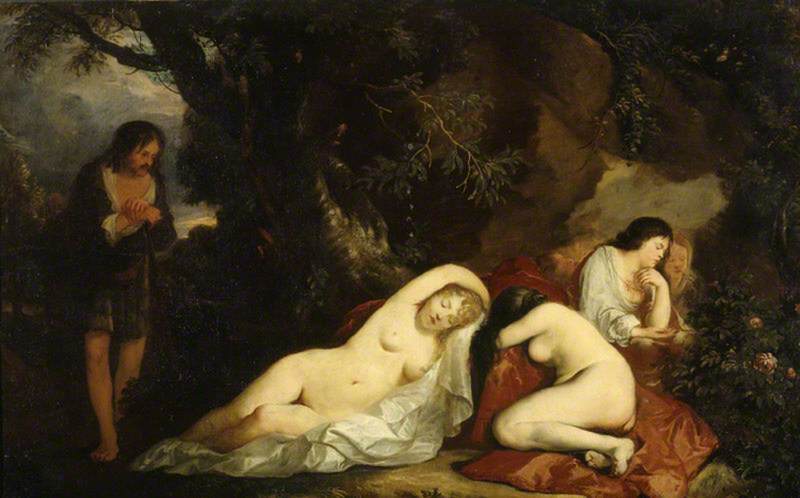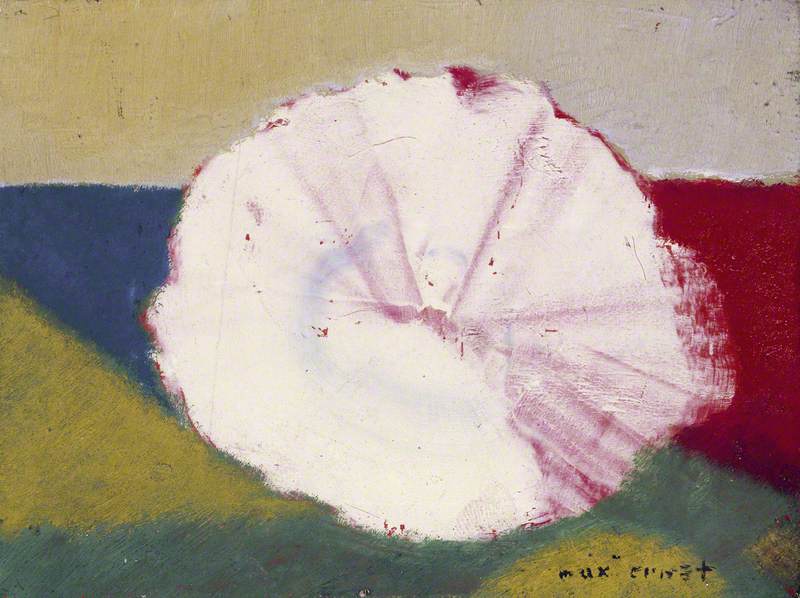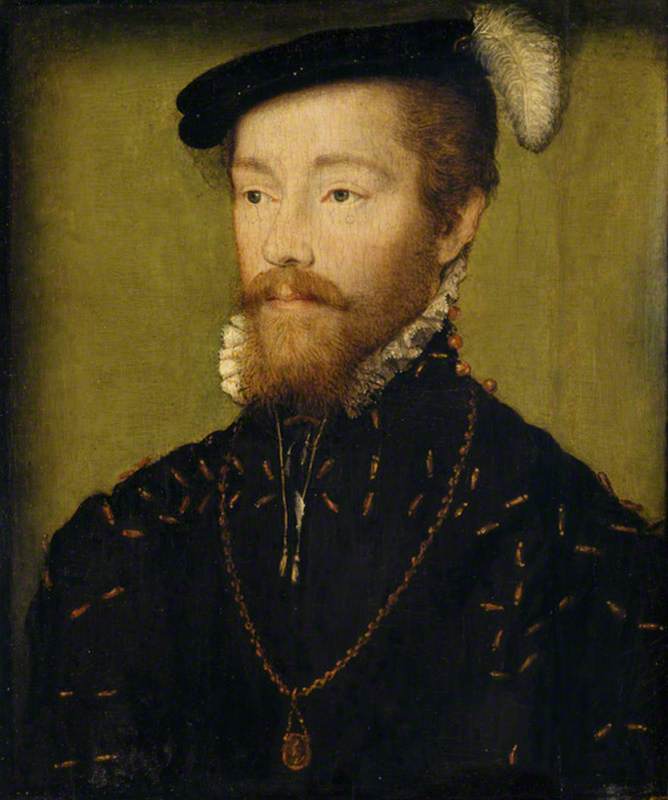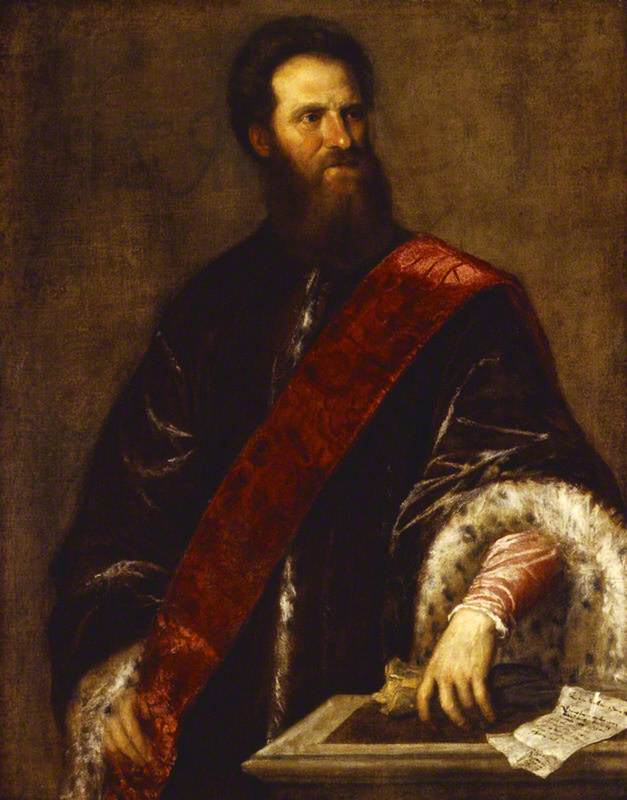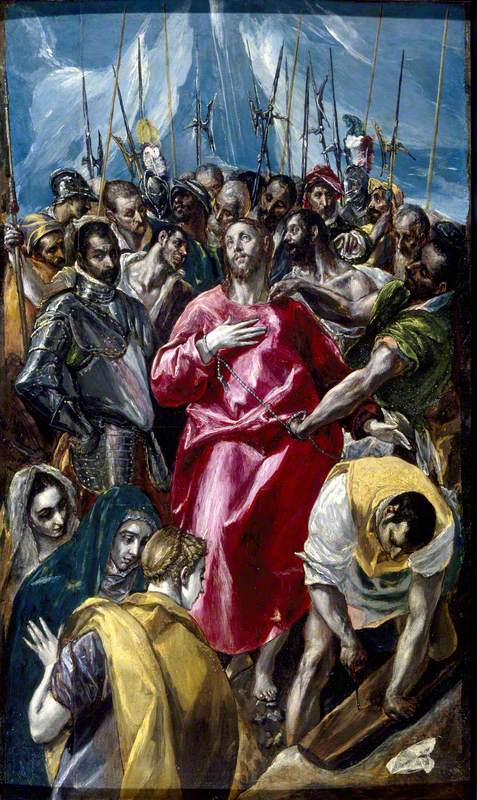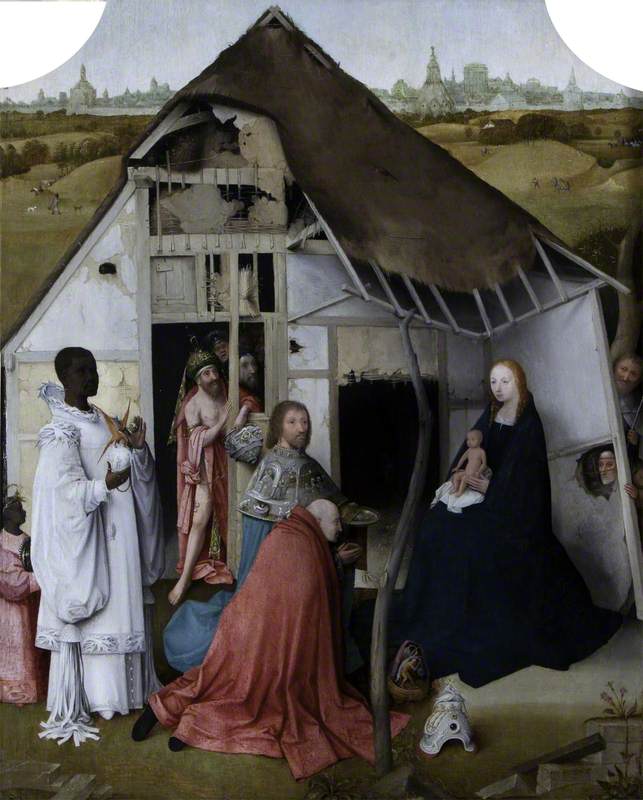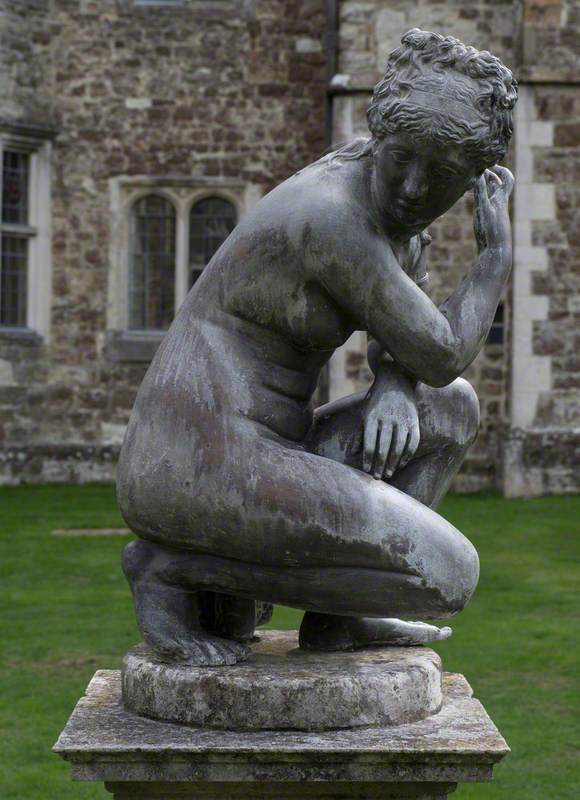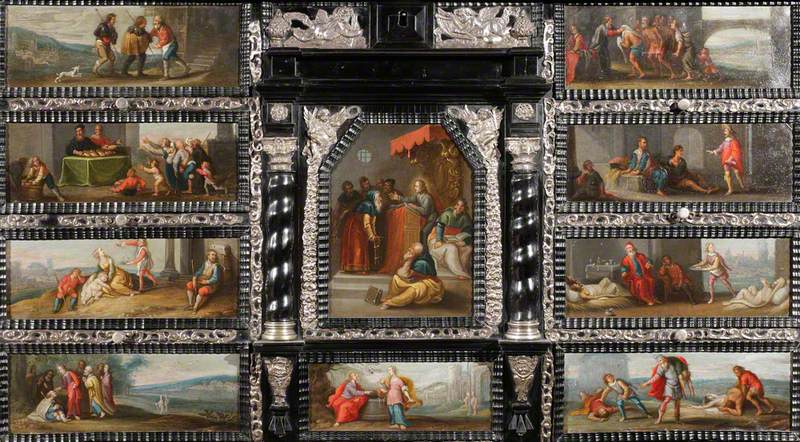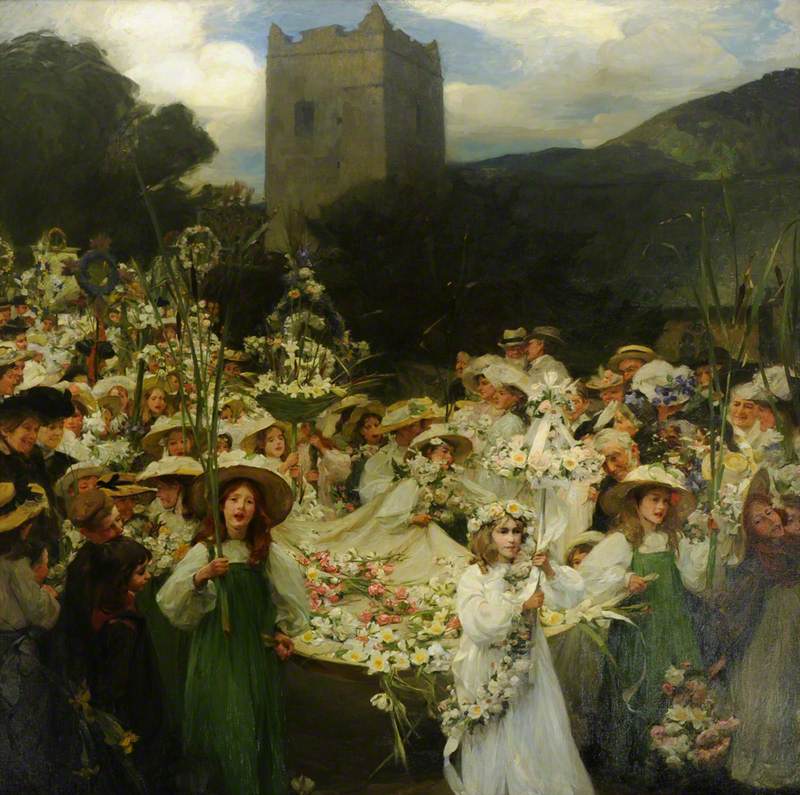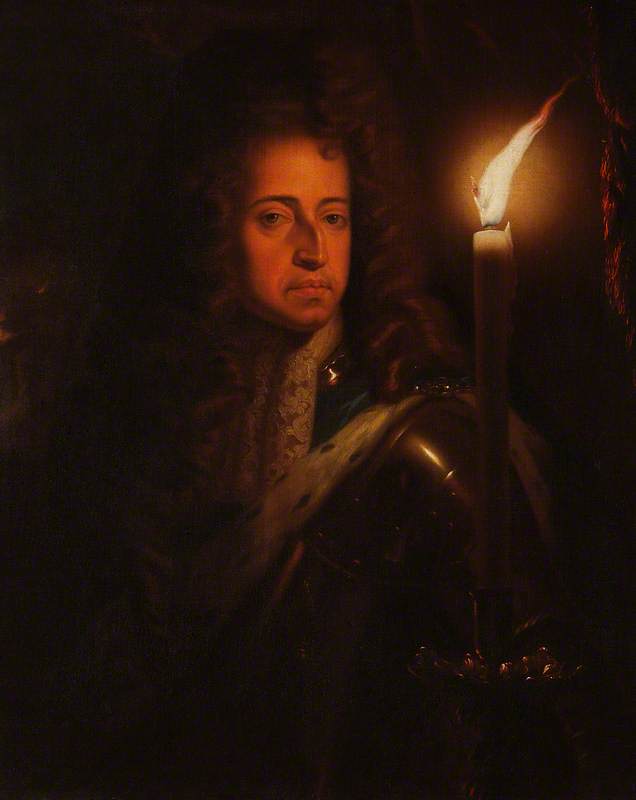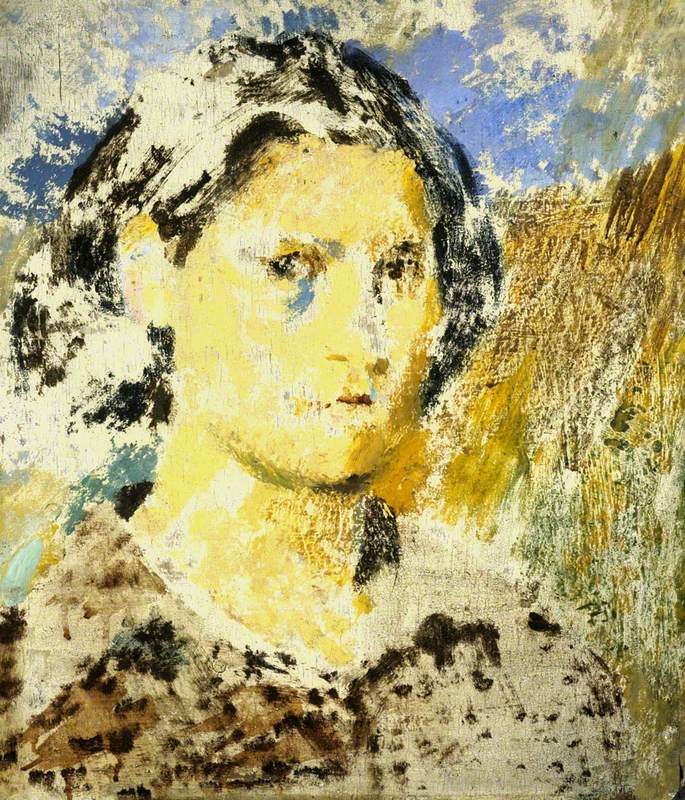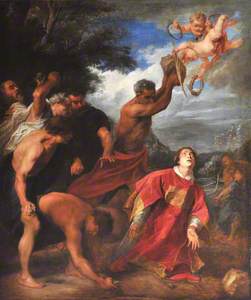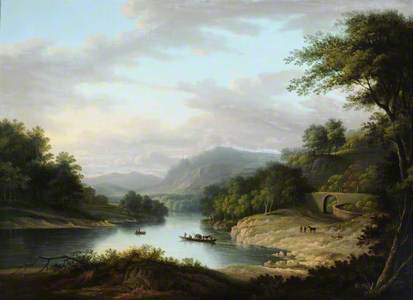The National Trust was founded in 1895 with the aim of saving Britain’s heritage and open spaces.
There are now thousands of sites and properties under the care of the Trust including historic houses, gardens, mills, villages, coastline – and even pubs.
David Taylor, National Trust's Curator of Pictures and Sculpture, has chosen ten favourite oil paintings from the 14,000 across its 200 properties.
1.
Elizabeth Cornwallis (d.1708), Mrs Edward Allen, as Diana the Huntress
Jacob Huysmans (c.1633–1696) 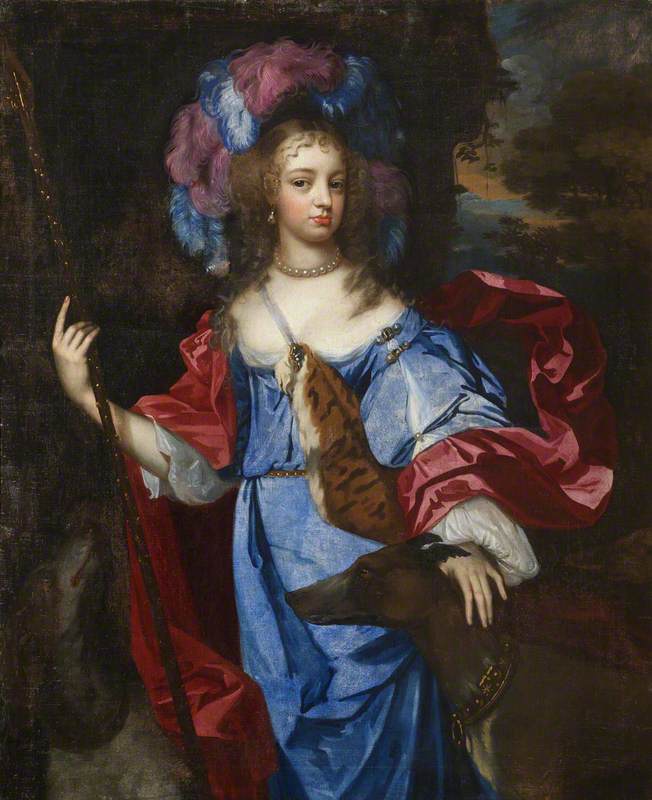
This exuberant portrait at Canons Ashby in Northamptonshire was painted by Huysmans, a Flemish artist who came to England in 1662.
One of his patrons was Catherine of Braganza, Charles II’s wife.
Huysmans often painted ladies of their court in the guise of Diana, the Roman goddess of the hunt, to reinforce the notion of their beauty, purity and chastity.
2.
Is this a surprisingly modern work for a historic house?
Although the title refers to a shell this is almost an abstract painting. Max Ernst was a well-known Surrealist artist; and he painted it at the age of 70.
It formed part of the modern art collection of the diplomat Sir George Labouchere, and is on show at Dudmaston in Shropshire.
3.
This work was owned by Margaret McEwan, daughter of William, the Scottish beer magnate, and can now be seen at Polesden Lacey in Surrey.
The sitter has been wrongly called ‘Leroy’, a misinterpretation of the inscription on the back of the painting: ‘le roi, agé 25’. ‘Le roi’, (or 'the king' in French), is actually James V of Scotland, father of Mary, Queen of Scots.
It was painted whilst he was in France for his wedding with Francis I’s daughter, Madeleine.
James wears a fashionable black doublet decorated with gold aglets, a gold chain and a chivalric pendant medallion.
4.
Prince Baltasar Carlos (1629–1646), Aged 6, as a Hunter
1635–1636
Diego Velázquez (1599–1660) 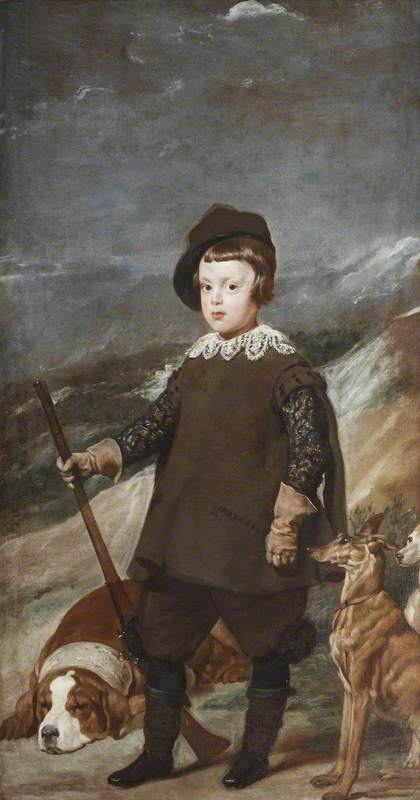
Velázquez was a master of seventeenth-century painting and employed by the Spanish royal household.
Baltasar Carlos, beloved and only son of Philip IV of Spain, is seen here as a sportsman at the age of six.
He is shown with a partridge dog, and two miniature greyhounds. He died aged just 17.
The painting was probably acquired in France by Frederick William Hervey, 5th Earl & 1st Marquis of Bristol and can be seen at Ickworth, in Suffolk.
5.
The Flemish artist Van Dyck is celebrated for his striking royal and aristocratic portraits. Before he lived in England, however, he mainly painted religious works.
This biblical scene shows the moment before Stephen, one of the early Christian martyrs, is stoned to death by a mob.
Among them was Saul who later converted to Christianity and became Paul, the apostle and great missionary.
Made in Sicily before it was taken to Madrid in 1628, the painting turned up in England after the fall of the Spanish king in 1808. It's now at Tatton Park in Cheshire.
6.
Catterline in Winter
c.1960/1967
Joan Kathleen Harding Eardley (1921–1963) 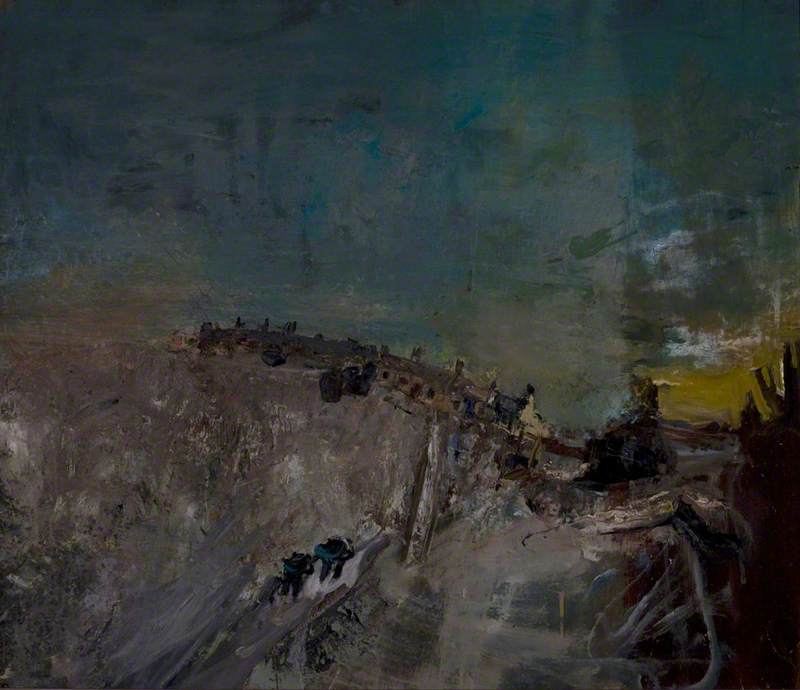
The artist is known for her realistic depiction of Glasgow slums and expressive landscapes.
In 1956 she settled in the fishing village of Catterline, Aberdeenshire, along with a group of fellow artists.
She painted outside in bad weather, strapping her easel to a rock. Thick paint, vibrant colours and frenzied brushstrokes express heavy skies and crashing waves.
This artwork belonged to the artist Derek Hill. He gave it to Mottisfont Abbey in Hampshire where it still hangs.
7.
This picture is displayed in Goddards, the former North Yorkshire home of Noel Goddard Terry, the chocolate manufacturer.
The translucent light in the landscapes of Nasmyth’s native Scotland is distinguishable.
Loch Achray in Stirlingshire lies at the heart of the Trossachs. The magnificent scenery of water, forests and mountains attracted various artists including J. M. W. Turner.
Nasmyth trained as a portrait painter in Edinburgh and London under Allan Ramsay but after an inspiring Italian sojourn, he turned exclusively to nature in the 1790s.
8.
This fine portrait from Titian’s later period lost its identity for many years.
His likeness was recently matched with an inscribed sculptured bust in an Italian museum.
Nicolò Zen was an author and a friend of Titian's patrons Pietro Aretino and Daniele Barbaro. He was a knight, which accounts for the colour of his robe.
He served as ambassador to Emperor Charles V in 1545 and as an official for the Republic of Venice.
This painting can be seen at Kingston Lacy in Dorset.
9.
El Greco, originally from Crete, settled in Toledo, Spain, and this small personal panel is a study after a larger painting in the city's cathedral.
The latter work was hung in the sacristy where priests would don their liturgical vestments before mass, which would have befitted the subject matter.
The scene depicts the moment of the Passion. Christ, stripped of his clothes and dressed in a scarlet robe, proceeds on the road to Calvary and his crucifixion.
This painting was once owned by French Romantic artist Eugène Delacroix. It's now in Upton House, Warwickshire.
10.
Peasants Carousing Outside of an Inn
1670–1679
Adriaen van Ostade (1610–1685) 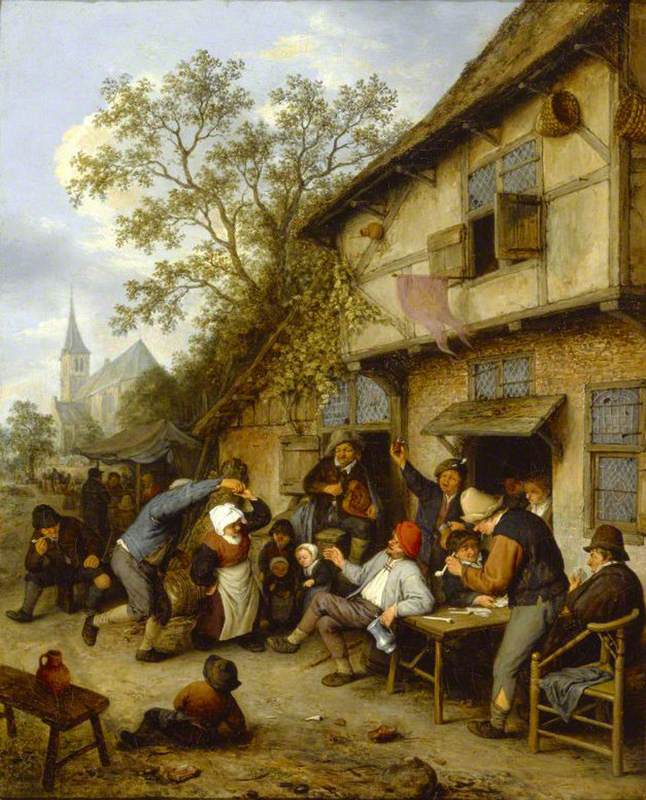
This is a lively and comic scene of peasants in the beer-making city of Haarlem in Holland enjoying their leisure time.
Many works from the golden age of Dutch painting have a moralising tone. It’s subtly referred to here by the church in the background. Ostade’s depiction of the group is affectionate rather than judgmental, however.
This work is in Ascott, Buckinghamshire.
David Taylor, Curator of Pictures and Sculpture, National Trust
Editor's note: This story first appeared on the BBC Arts website. The BBC is an Art UK Project Partner.
